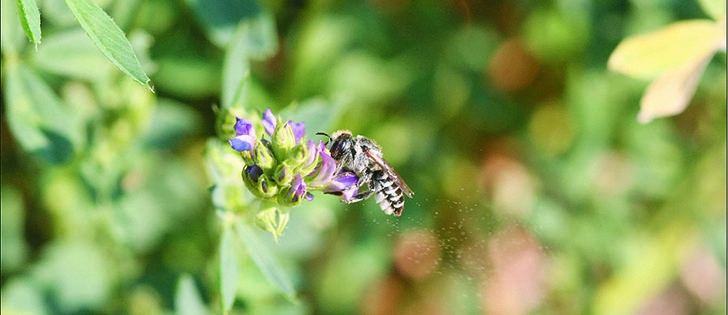Three viruses have been found in Alberta leafcutter bee populations, but it isn’t known whether they are harmful.
Shelley Hoover, a bee researcher with Alberta Agriculture in Leth-bridge, sampled adult leafcutter bees in southern Alberta fields this year.
“We’ve identified three different viruses on these leafcutter bees.”
She said they are still working to identify two of the viruses they found in all the samples collected. Hoover said they are closely related to viruses found on honeybees and have been detected in leafcutter bees before.
Read Also

No special crop fireworks expected
farmers should not expect fireworks in the special crops market due to ample supplies.
But the third, found in slightly less than half of the samples, is sac brood virus. She thinks it may be the first time it has been found on leafcutters. It is more typically found in honeybees, where it infects and kills larva.
“We don’t know what effect it has on the (leafcutter) bees, and I only sampled adult bees, so we don’t even know if it’s replicating on the bees or if they’ve just picked it up.”
Hoover said little research has been done on viruses in leafcutter bees. Most prevailing knowledge about bee viruses pertains to honeybees.
“Just because it’s in honeybees doesn’t mean that it can’t infect other bees, either naturally or because of proximity to honeybees,” he said.
“It may be that some of these viruses are either naturally present in the other bees or can jump hosts to these other bees from the honeybees, and vice versa.”
Hoover said there are few solutions if the viruses prove harmful to leafcutters. Controlling the vector is the main preventive measure, which includes controlling mites that can carry the viruses.
Hoover was a guest speaker at the Dec. 3 Farming Smarter conference, where she emphasized the importance of bees to food production.
Leafcutter bees are among a host of important crop pollinators, including honeybees, bumblebees, butterflies and birds.
“(However), leafcutter bees are to honeybees as a giraffe is to a goat,” said Hoover.
They have many similarities but also marked differences.
There are 7,000 honeybee keepers in Canada. Alberta has 40 percent of the nation’s honeybees.
Hoover attributed bee losses to winter kill, inadequate nutrition, poor genetics, parasites, diseases, pesticides and fungicides. Varroa mites are public enemy number one.
















